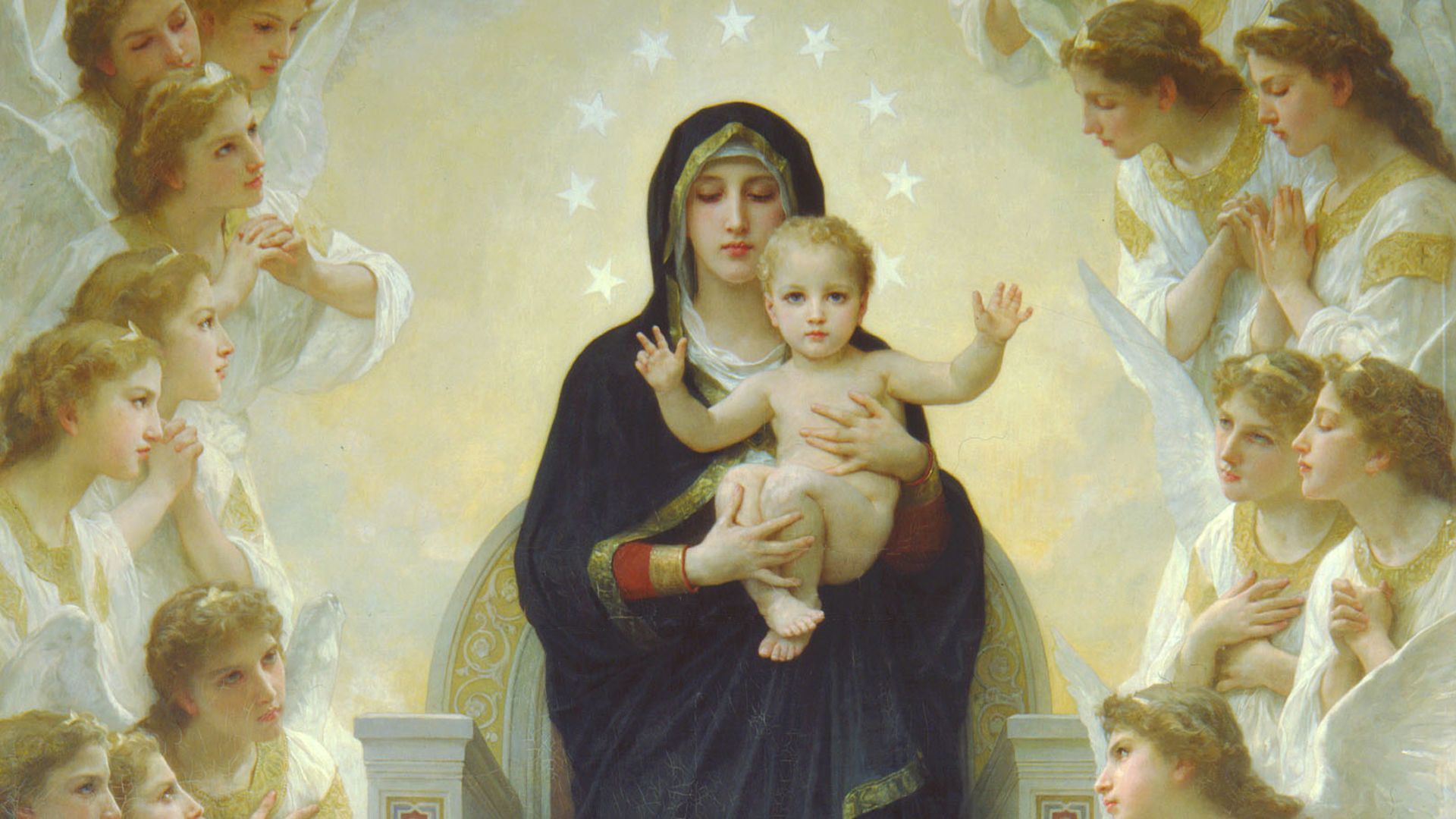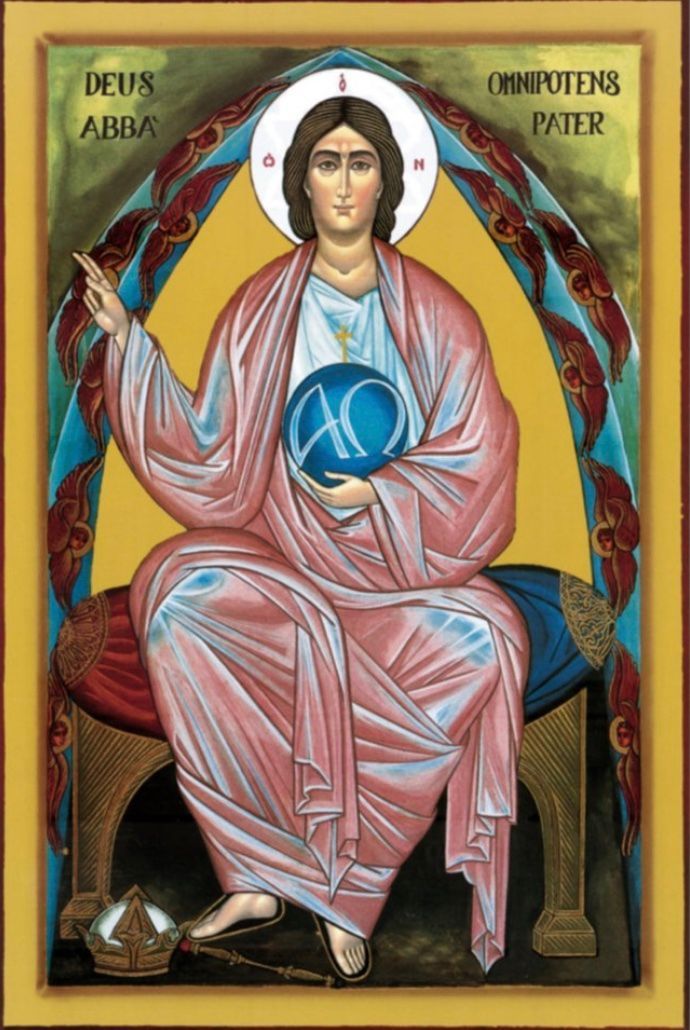Article
Worship of Mary
Amongst the concerns that are most often expressed against the Catholic Church and which have no basis whatsoever in the mind of the typical Catholic is the accusation of idolatry in terms of Mary. The Catholic Church does not worship Mary and it would be a gross offense of the First Commandment if this were true.
Unfortunately the use of the old fashioned word ‘venerate’ doesn’t help the situation, since few people would ordinarily use the word, so it’s meaning as used by Catholics has been somewhat ‘assumed’ by many Protestants.
The word ‘venerate’ means ‘to regard with great respect’, which is how Catholics view Mary. The Catholic Church certainly does honour and greatly respect Mary, but she is never considered to be God, or a deity alongside God, or anything other than a Woman who has a special place in God’s heart and also in the heart of her children – the Church.
Having earlier considered the Scriptural references to Mary, as considered by the Catholic Church, in the other pages of this website, the reader will recognise many of the titles by which we consider Mary listed below in the Litany of the Blessed Virgin Mary. All of them relate to Scriptural insights as already mentioned and using all of these titles, we ask for Mary to ‘pray for us’ to God.
Litany of the Blessed Virgin Mary - Approved by Pope Sixtus V in 1587
Lord, have mercy on us.
Christ, have mercy on us.
Lord, have mercy on us.
Christ, hear us.
Christ, graciously hear us.
God the Father of Heaven, have mercy on us.
God the Son, Redeemer of the world, have mercy on us.
God the Holy Ghost, have mercy on us.
Holy Trinity, one God have mercy on us.
Holy Mary, pray for us. Holy Mother of God pray for us.
Holy Virgin of virgins, pray for us.
Mother of Christ pray for us.
Mother of divine grace, pray for us.
Mother most pure pray for us.
Mother most chaste, pray for us.
Mother inviolate, pray for us.
Mother undefiled, pray for us.
Mother most amiable, pray for us.
Mother most admirable, pray for us.
Mother of good counsel, pray for us.
Mother of our Creator, pray for us.
Mother of our Savior, pray for us.
Virgin most prudent, pray for us.
Virgin most venerable, pray for us.
Virgin most renowned, pray for us.
Virgin most powerful, pray for us.
Virgin most merciful, pray for us.
Virgin most faithful, pray for us.
Mirror of justice, pray for us.
Seat of wisdom, pray for us.
Cause of our joy, pray for us.
Spiritual vessel, pray for us.
Vessel of honor, pray for us.
Singular vessel of devotion, pray for us.
Mystical rose, pray for us.
Tower of David, pray for us.
Tower of ivory, pray for us.
House of gold, pray for us.
Ark of the Covenant, pray for us.
Gate of Heaven, pray for us.
Morning star, pray for us.
Health of the sick, pray for us.
Refuge of sinners pray for us.
Comforter of the afflicted, pray for us.
Help of Christians, pray for us.
Queen of angels, pray for us.
Queen of patriarchs pray for us.
Queen of prophets, pray for us.
Queen of apostles, pray for us.
Queen of martyrs, pray for us.
Queen of confessors, pray for us.
Queen of virgins, pray for us.
Queen of all saints, pray for us.
Queen conceived without Original Sin, pray for us.
Queen assumed into Heaven, pray for us.
Queen of the most holy Rosary, pray for us.
Queen of peace, pray for us.
Lamb of God, who takes away the sins of the world, Spare us, O Lord.
Lamb of God, who takes away the sins of the world, Graciously hear us, O Lord.
Lamb of God, who takes away the sins of the world, Have mercy on us.
Pray for us, O Holy Mother of God, That we may be made worthy of the promises of Christ.
Grant, we beseech Thee, O Lord God, that we Thy Servants may enjoy perpetual health of mind and body and by the glorious intercession of the Blessed Mary, ever Virgin, be delivered from present sorrow and enjoy eternal happiness, through Christ Our Lord. Amen.”
In no way then, as evidenced by this comprehensive Litany which is still commonly used today, is Mary ever in any way, considered to be a deity.
Statues and images generally
The Bible states that we must not ‘bow down to’ or worship anyone as if they were God, that only God is to be worshipped. But bowing down to anything or anyone, is not to worship them, and Scripture advocates such conduct for displaying honour to another:
Genesis 27:29 'Let peoples serve you, and nations bow down to you. Be lord over your brothers, and may your mother's sons bow down to you. Cursed be everyone who curses you, and blessed be everyone who blesses you!''
As usual God examines the heart and if we do not intend to worship someone as if they were God, then showing honour to a person is quite permitted – even encouraged
Also Jesus Himself states:
Revelation 3:9 'I will make those of the synagogue of Satan who say that they are Jews and are not, but are lying--I will make them come and bow down before your feet, and they will learn that I have loved you.'
There are numerous examples of bowing or honouring in the Bible which are clearly not being seen as offensive or idolatrous, but it is clear that the gesture is not so important as the heart and the intention. At the time of the Reformation and Henry VIII’s attack on the Catholic Church in England, while there is no question that there were abuses and superstitions amongst lay people across the Catholic Church in England as seen in the following examples, these were interwoven with practical expressions of faith (Please note Olde English spelling!):
New Paragraph
“From Bath Abbey in August Richard Layton wrote “I send you vincula S. Petri, which women put about them at the time of their delivery … I send you also a great comb called St Mary Magdalen’s comb, and St Dorothy’s and St Margaret’s combs.”
From Bury St. Edmonunds John ap Rice reported:
(Eamon Duffy The Stripping of the Altars)
“Amongst the reliques we found moche vanitie and superstition, as the coles that Sant Laurence was toasted with, the paring of S. Edmundes naylles, S. Thomas of Canterbury penneknyff and his bootes, peces of the olie crosse able to make a hole crosse of … with such others"
.“…At Westminster was Our Lady’s girdle “which women with cheild were wont to girde with”, at Bruton in Somerset St Mary Magdalene’s girdle “sent to women travailing”.“…In attacking monastic “superstition”, then, Cromwell’s men were striking at institutions with a central place in popular religious practice, perhaps most unexpectantly in the domestic intimacies of pregnancy and childbirth. In such widespread evidence of the integration of the monastic shrines into the fabric of popular religion however, the visitors aw, or chose to see, nothing more than evidence of large-scale exploitation of simple believers. Yet they could hardly be unaware of the large numbers of devotees affected, and potentially alienated, by their actions.”
“Henry [King Henry VIII] was happy to see images venerated so long as they were not “honoured as God”. Cranmer in contrast, thought images should have “no manner of honour” neither that due to God nor “such as is due to his reasonable creatures”.
We have shown above that Cranmer is contradicting Scripture in his zeal to eliminate superstitious practices. There is no suggestion in the historical references or in today’s Church, that any object or image is not considered to be the actual saint or actually Jesus on the crucifix hung on a wall.
These were always ‘aids to devotion and prayer’, especially in the 1500’s when most people could not read the Latin or eventually English Bibles – the images and statues helped the simple faithful in their faith.
(Eamon Duffy The Stripping of the Altars)
“On the feast of the Assumption 1537 Thomas Emans, a Worcester serving-man, entered the despoiled shrine of Our Lady of Worcester, recited a Paternoster and an Ave, kissed the feet of the image, from which jewels, coat, and shoes had been taken away, and declared bitterly for all to hear, “Lady, art thou stripped now? I have seen the day that as clean men hath been stripped at a pair of gallows as were they that stripped thee.”
He told the people that, though her ornaments were gone, “the similitude of this is no worse to pray unto, having a recourse to her above, then it was before”.
The Catechism of the Catholic Church states:
CCC 2132 The Christian veneration of images is not contrary to the first commandment which proscribes idols. Indeed, "the honor rendered to an image passes to its prototype," and "whoever venerates an image venerates the person portrayed in it." The honor paid to sacred images is a "respectful veneration," not the adoration due to God alone:
Religious worship is not directed to images in themselves, considered as mere things, but under their distinctive aspect as images leading us on to God incarnate. The movement toward the image does not terminate in it as image, but tends toward that whose image it is.
Images and statues are aids to prayer
CCC 1192 Sacred images in our churches and homes are intended to awaken and nourish our faith in the mystery of Christ.
Through the icon of Christ and his works of salvation, it is he whom we adore. Through sacred images of the holy Mother of God, of the angels and of the saints, we venerate the persons represented.
The public procession of a statue of Mary or a saint – usually on an occasional day of celebration - is in no way different to using a statue as an aid to prayer to that saint.
Similarly, while easily misunderstood, to kiss a statue is an extension of such a private devotion – not to the statue but to the figure it represents – like kissing a photograph of loved ones, is obviously not kissing them in practice.
When groups of people elevate something that they value greatly, it is an expression of emotion and not a gesture of divine worship. Whether a Crucifix, a statue of a saint or a hard-won trophy, they represent something, but they are not considered to be a God to worship.
CCC1162 "The beauty of the images moves me to contemplation, as a meadow delights the eyes and subtly infuses the soul with the glory of God." Similarly, the contemplation of sacred icons, united with meditation on the Word of God and the singing of liturgical hymns, enters into the harmony of the signs of celebration so that the mystery celebrated is imprinted in the heart's memory and is then expressed in the new life of the faithful.
Respect not Conversion
It is not our intention to convert Protestants to believe or agree with Catholic teaching, but to demonstrate and reassure any Protestant reader of the intellectual integrity of the Catholic Church’s interpretation of Holy Scripture, and particularly on these pages, the Catholic understanding of the role of the Virgin Mary – “the handmaid of the Lord “ in God’s plans for mankind.
We hope that to demonstrate that each of the respective Catholic beliefs about the Virgin Mary is rooted in the Bible and Christ-centred is a valid biblical interpretation for the Catholic Church to make, which our Protestant brothers and sisters should be able to respect.
share this
Related Articles
Related Articles






